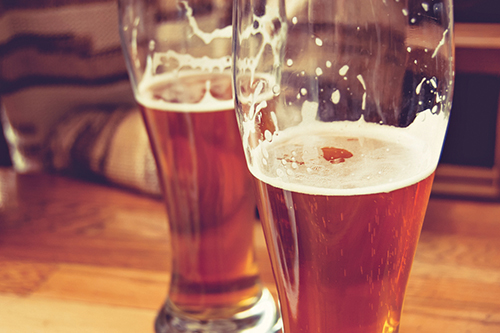
By Jack Kenny

Jack Kenny, Beer Columnist
In centuries past, beer was cloudy. Hazy and murky are other apt descriptors. Beer in those days was unfiltered, and nobody cared, because there was no other kind of beer. The liquid was poured into an opaque vessel of earth, bone, horn or metal. Glass was rare and affordable only by the aristocracy.
When commercial glass took off in the mid-1800s, folks could see into their beer, sort of. Around the same time, clear lagers became the thing, and since then clear beer has been the standard. Wheat beers, of course, are allowed to be hazy, but any other brew that isn’t clear has something wrong with it. So we believe.
During the reign of clear beer, a cloudy lager or ale was given the jaundiced eye because it might have become infected with unwanted bacteria; the yeast might have suffered some issues, or was the wrong strain; certain adjuncts were problematic, or the filtration system wasn’t performing as it should. Maybe the brewer cooled the beer too quickly, or perhaps it was overly dry-hopped. Any of those could apply. In the past few years, the American craft beer palate began to experience a change, thanks in large part to the brewers of New England.
It’s a small evolution, to be sure, but it has captured the attention of deeply serious beer lovers (and beer snobs, to be sure) and it’s growing at a fairly good clip. The subject is hazy beer, aka New England IPA.
The trend is believed to have started in Vermont with Alchemy Brewing’s creation of Heady Topper, a double IPA. Joining it are the beers of Hill Farms, also in Vermont, Tree House in Massachusetts, and Connecticut’s own New England Brewing. It has since spread across the continent and the internet, spawning fans and furor, delight and snark.
The cloudiness can range from a gentle nimbus to a full-on cumulus. Suspended yeast cells are a contributor, as are particles from barley and oats (if used). Water chemistry plays a role, too, as does the dry-hopping process. Dry-hopping is the addition of significant quantities of hops at the end of the boil, or just afterward during fermentation. Its purpose is to add aromatic characteristics to the batch. Compounds in the hops known as polyphenols contribute to the turbidity. (Turbidity, the word, makes some beer people uncomfortable, even though it is accurate. Brewers use it mostly to identify beers that are murky as the result of infection.)
Those who are presented with a hazy beer for the first time might regard it with furrowed brow, but consumption will dispel the doubt. These are beers with pronounced flavors, redolent of such fruits as mango, papaya, pineapple and others; they are majestic for good reasons.
First, they are fresh. They must be, because hops have a short shelf life in a bottle or can, and a very short life on tap. Hop character is volatile and breaks down, so a bold hoppiness is difficult to maintain. Most cloudy beers, if left in the bottle or growler, will clear as the suspended solids settle.
Second, they are not filtered. Making a clear beer involves conditioning at cold temperatures. It also makes use of clarifying agents to reduce haze. Finally, it is filtered. These can diminish the aroma and flavor of hoppy beers. Eliminating those steps yields a hazy beer that possesses a higher concentration of hop oils and other aroma/flavor compounds. The appearance might startle, but the reward for the senses can override that minor discomfort.
Over time, those desirable flavors and aromas will change. Put a fresh bottle of hazy beer in the fridge for four weeks and the change will be noticeable. The haze will have diminished or settled completely; the hop character will have degraded – not necessarily in a bad way – and the experience will not compare to that of the previous month.
New things are objects of praise and scorn, and especially in scientific fields do the critics find fault at a high pitch. It pays off, however, to give a creation time to develop some sophistication rather than attack it at inception. It’s the same with beer. A few years from now, turbid beer will be met with benign smiles, just around the time that something newer comes along to get jumpy about.
Jack Kenny has been writing the Beer Column for The Beverage Journal since 1995. Write to him at thebeercolumn@gmail.com.



